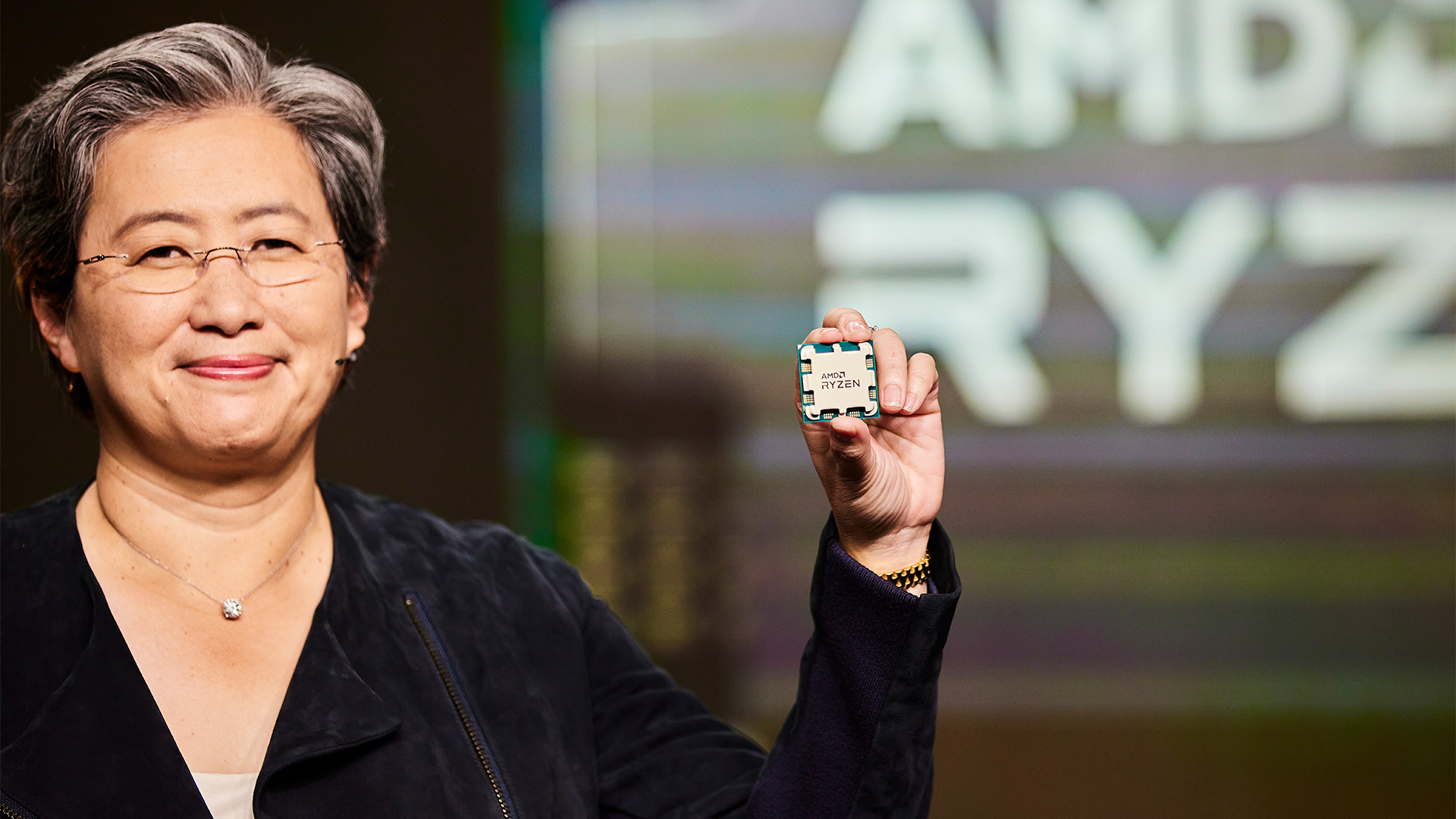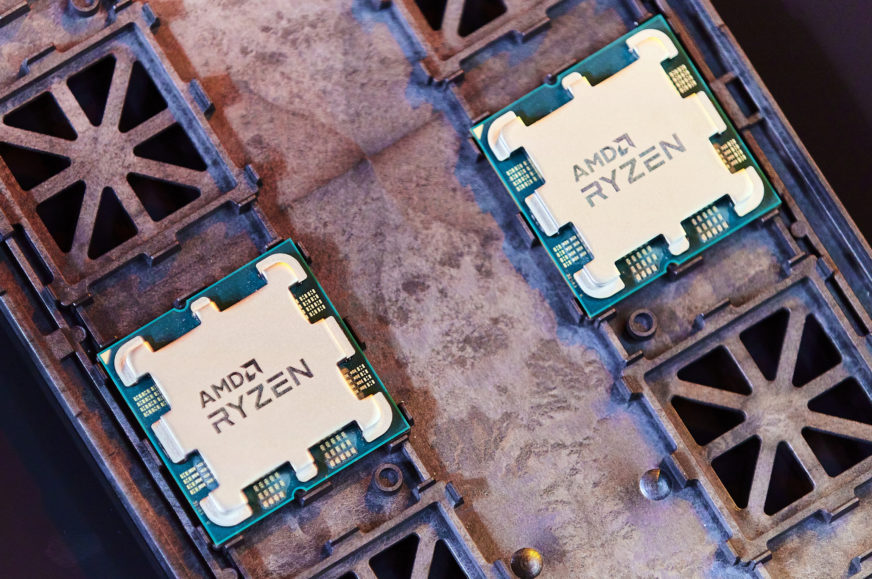Outlines of gen 7000 AMD Ryzen 9 processors
Sometime in the second half of the year, AMD should finally release the new AM5 desktop platform with DDR5 memory after six years of AM4 socket (which premiered in 2016). That will bring us the much awaited 5nm Ryzen 7000 CPUs with Zen 4 architecture, and it’s about time we got some leaked details. Now one such has come up: information on the core count and also watt count of Ryzen 9 models from the 7000 generation.
Leaker Greymon55 on Twitter has come up with two pieces of information now. The first concerns the number of cores and power draw for the most powerful models labelled Ryzen 9. According to this leaker, in the 7000/Zen 4 generation, Ryzen 9 processors will exist with three different TDPs – there will be 65W, 105W and now also 170W versions. We suspect this info was procured in some internal list of planned models or engineering samples. Greymon55 specifically notes that the 120W models talked about in previous leaks are not yet listed among these Ryzen 9s configurations. But what was confirmed, is sadly the rumor that some models will sport even more terrifying 170W TDP.
Previous information (from a leaker nicknamed ExecutableFix) was that 170 W TDP would not be a regular configuration an exception and more of an exception which might only be used by some special edition SKU (a model like Ryzen 7 5800X3D or Intel Core i9-12900KS). But according to Greymon55, 170 W could be one of the standard TDPs. Furthermore, the leaked data shows that in the 7000 generation, the Ryzen 9s will be 12-core and 16-core CPUs (with SMT and thus double the threads, of course) just like in the 3000 and 5000 generations.
Twelve-core Ryzen 9s are expected to end up at 105 W TDP in the 7000 generation (and there could probably be a 65 W model as well, though perhaps like the Ryzen 9 5900 it could be for the OEM market only). But the 16-core Ryzen 9 is supposed to have up to 170 W TDP. It’s possible that AMD will release two versions (like the 7950 and 7950X), one of which will have power draw reduced to 105W, but the highest performance model will have 170 W TDP, according to Greymon55.
170W 16C 32T
105W 12C 24T— Greymon55 (@greymon55) March 24, 2022
As you probably already know, the actual power draw under load is allowed to go higher than the TDP for AMD processors (although not by as much as for Intel). If you load all cores, the processor will draw power during boost up to somewhere near the so-called maximum PPT (Package Power Tracking) limit, assuming you don’t have a severely stripped-down motherboard unable to sustain the power draw. This PPT is set to 88 W for 65 W processors and 142 W for 105 W models (in both cases the PPT is 35 % higher than the TDP) and Ryzen processors respect this limit quite strictly as far as we know. Anyway, it is likely that the same situation will be the case for processors with 170 W TDP. Thus a 170 W Ryzen 9 7950X(?) under maximum load could have a realistic power limit of 230W.
This is a big jump from the current 142W limit. It’s interesting that AMD is doing this despite the fact that Zen 4 will be manufactured on a new 5nm process that should reduces power draw. So maybe the increased complexity and transistor count of the Zen 4 architecture will outweigh this, resulting in Zen 4 having the same or higher power draw per core vs Zen 3.
Read more: First details of Zen 4 leaked. L2 cache and TLB increase, AVX-512 support, hopefully ALU count
A slippery slope of increasing power draw
This higher power draw is probably a reaction to how Intel has been cranking up their power draw lately. Its processors were allowed to draw up to 250W in previous generations, with the Core i9-12900K and Core i9-12900KS drawing up to 241 W. By doing so, Intel significantly increases their multi-threaded performance, while AMD suffers a self-imposed performance handicap by keeping the processors consistently at lower limits (the PPT 88 W and 142 W), laudable as that is.
The market seems to have more or less completely accepted Intel’s power draw inflation, so targeting better power efficiency instead of maximum performance doesn’t seem to be a rewarding policy for AMD. Thus, they seem to be planning to also loosen the limits and increase performance at the cost of massive power draw in the case of the 170 W Ryzen 9 processors.

Will AMD still only have 16 cores as a maximum?
Note how according to Greymon55’s tweet, the most powerful Ryzen 9 is said to still only be 16-core processor. So there’s no talk of increasing the core count, even if this means it will have been unchanged since 2019 when the Ryzen 9 3950X came out. It has often been assumed that AMD will release even a 24-core version (which would logically need three CPU chiplets), and some YouTubers even claim that AMD is planning to do so. Only Greymon55 doesn’t confirm anything like that at all, so maybe they will really stick with just 16 cores.
It is true that higher and higher core counts are less easy to utilize, and perhaps continuing from 32 to 48 threads would already yield too little benefit in programs typically used in reviews and by users in general. Intel does plan to ship 24 cores in the Raptor Lake generation (13th generation Core processors for desktop), but it will use 8 large and 16 small/efficient cores, so the whole thing will still only have 32 threads. The situation therefore is a little bit different than when we were going from four cores to eight and from eight to twelve to sixteen. But even so, more cores is probably still the future in general.

DDR5 and DDR4 support?
Greymon55 brought up one more tidbit about Zen 4 processors on Twitter. It was assumed that the AM5 platform would be using purely the new DDR5 memory, as opposed to the Intel LGA 1700 desktop platform, where you can find boards for both DDR5 and DDR4 (and there is even a rare model that has both kinds of slots).
According to Greymon55, the “Zen 4” processors are said to have a controller for both DDR4 and DDR5 memory, contrary to previous expectations. And thus, there could also be boards for Ryzen 7000s that will use DDR4 memory, allowing you to save on RAM. or exploit the lower latencies, which for some applications may be an advantage against DDR5 and its higher bandwidth.
ZEN4 does have DDR4 and DDR5 controllers, but I hope eventually it will have DDR4 support when it goes on sale!
— Greymon55 (@greymon55) March 22, 2022
The memory controller will probably be located in the separate IO chiplet again, not directly in the CPU chiplets with Zen 4 cores. It’s not very clear if Greymon55 is saying here that the new IO chiplet for Ryzen 7000 and LGA 1700 platform will have a controller with support for both memories. Theoretically, it could also be that AMD will make a version of the Ryzen 7000 reusing the IO chiplet from the Ryzen 3000/5000 generation that has support for DDR4. But those processors could that even work in an AM4 socket instead of AM5, at that point. That would probably please a lot of owners of these boards, even if they would then lose features of the new platform like PCIe 5.0 support. But he have to say that this seems like a very strange and probably unlikely possibility.
So overall, this rumour about DDR4 support should probably be taken with a big grain of salt for now – although this is not the first time such possibility is discussed by leakers.
English translation and edit by Jozef Dudáš, original text by Jan Olšan, editor for Cnews.cz
⠀











